I've decided a few weeks ago to invest some time on learning new things, work on some tools that I wanted to build for quite a long time but never gave them the proper time to do it. So I started with an app that I wanted to write a while ago but never started with it, because I didn't have time, I didn't have a VPS to host it, and specially I didn't have a strong commitment to work on it.
The app is a very simple application to handle series that I'm currently watching or wish to watch, since always my main workflow for this puny task a spreadsheet in Libreoffice Calc and lately (around 2 years) I added a Python-GTK app that I wrote en execute it from my taskbar. So it's a chaotic way of doing things, handle a spreadsheet with series and their season, chapter and in the Python app handle those that I want to see.
The Chaos
Using a spreadsheet
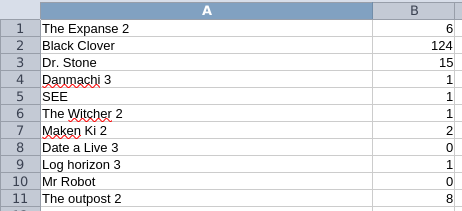
Using my Python Notes App
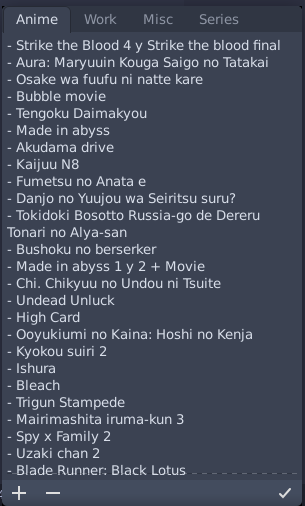
Motivation
As I explained on my previous post about Actix Web and Swagger
I wanted my own app to track chapters of series, doramas and animes I watch, I know that streaming platforms has this feature integrated, but I prefer to have it completely separated since I tend change from an anime to a dorama or to a thriller or action serie from diff platforms and tracking them on one platform helps me to avoid some zapping.
The main motivation was to have a way to track series/animes/doramas chapters that could be used from my laptop/tablet/phone, the second motivation was to learn different things from different areas and increase my dev skills (I feel them a little bit rusty after working for some years on the same app/solution).
Technical decision
My main skills are on top of JVM langs such as Java and Kotlin. So I have to say that my experience with Frontend technolgies was a startpage for my browser called Caratula wich was badly written in VueJS, and this static site. For Backend technologies apart from JVM ones I have some experience with Rust, Python and a little bit of C++ and I have some love for those languages, so the choice was almost obvious to me, No JVM technologies.
C++ is great but I never did a REST Api with it and I didn't want to lose time learning a C++ REST Framework and remembering how to do things on that language. For Rust and Python I did some toy projects with Flask, Django and Actix Web, in fact the original API was written in Python + Flask around 7 years ago.
After some time thinking about Python + Flask or Rust + Actix for backend I decided to go with Rust considering that building the binary for a ARM64 VPS could be harder than deploying a Python app.
Then it comes the Frontend side, I never liked React but I had put it in the list of the possible technologies, so they were VueJS, React and Svelte as Frameworks and Bulma, TailwindCSS for CSS. Considering my previous "experience" with VueJS I decided to use it for my frontend along with Bulma
Strange choice Rust + VueJS
A backend dev with no knowledge on how to build frontends/webapps/SPAs is like an ape trying to use measuring tape
The Journey
After work a few days on the backend and make a decent API, I started with frontend and it was a nice experience seeing how different parts start to fit as a one solution. I want split this journey into 6 sections that will explain how was it until now
- Learning VueJS
- Learning Vue Router
- Learning Pinia Store
- Learning KY
- Learning Typescript
- Project organization
Learning VueJS
The beginning
As I said i had a teeny experience with Frontend, I wrote a few things on JS for this static site and the components for Caratula startpage, so the the frontend for my app started in the same way as Caratula. A sample of how i started
<script>
import { ref } from 'vue'
export default {
setup() {
const count = ref(0)
// expose to template and other options API hooks
return {
count
}
},
mounted() {
console.log(this.count) // 0
}
}
</script>
<template>
<button @click="count++">{{ count }}</button>
</template>
But something didn't feel completely right with how script section is written, it felt confusing and disconected. In any case i was working in the login page with this kind of code until I saw a different way of write the script section wich it looked more coherent to me, so I started to use it and then things started to feel right.
<script setup>
// variable
const msg = 'Hello!'
// functions
function log() {
console.log(msg)
}
</script>
<template>
<button @click="log">{{ msg }}</button>
</template>
<script setup>is a blessing to someone who understands only backends.
Reactivity and other Quirks
Understand ref and reactive** and how they can hold value from a html tag and/or update it was a challenge to me, because i couldn't connect the idea in my head. But once I understood it, evertyhing was way easier specially handle the data I got from API and show it on web browser.
onMounted was a super easy concept to understand what it does and how to use it. About watch, is something that I still need to review on documentation to not forget how it works. And one thing that troubles me a lot was to pass Global variables such as backend URL, at the begining I wrote them on the main.js file but lately I learned how .env, .env.local and .env.production.local works on VueJS and it was kinda a Eureka feeling. I used those files on other langs/projects such as Python but didn't know how they work with VueJS.
Learning Vue Router
After having a successfull login and create the component for the dashboard I couldn't connect the idea of go from one component to another and/or move between screens in my frontend. The concept itself was elusive to me. A frined of mine explained a little bit how a router works and that I should search for some router for my VueJS app. Vue-Router was the solution but I had some difficulties to understand how it works until I saw it as sequence or as a stack of pages like:
flowchart TD
PageA-->PageB
PageB-->PageA
PageB-->PageC
PageC-->PageB
Learning Pinia Store
I need it a way of dealing with credentials and didn't know how to use localStorage or any other storage on browser, so I looked on some places and It was obvious that hold credentials on localStorage wasn't the best idea. VueJS fellas recommended Pinia, so I started with a small tutorial, eveything worked flawlesly but I had this weird behavior when I hit F5/Ctrl-R keys and the session got lost, that thing drove me crazy for a couple of days until I understood that pinia didn't persit data on the store. Then using a plugin for persiting data on the store was super wasy and felt it natural.
Learning KY
This is a wonderfull library, I started to use with really simple calls, but recently I discover its more power with hooks that made a huge difference in how I deal with the call to the API
Learning Typescript
Javascript is kinda weird to me, it doesn't feel like I'm writing an entire application, it feels like I'm writing some scripts for specific things/actions. So I heard about the benefits of using Typescript and decided to convert my entire application from JS to TS. The transition was natural to me, having types for everything makes the code strong and easy to read. I can have classes and handle them as I use to in the backend. But most important now I feel like I'm writing an entire app and not a bunch of loose files that connects with magic. So Typescript was a great choice.
Project Organization
When the app started to grow like dashboards, adding a new serie, edit a serie, change some color, search bar, etc. I saw the need of having a good organization of my files. Having all Typescript code on the same .vue file didn't feel right, so I started to extract code, split responsibilites and move things where I think they belong. This organization is not something that I searched on the web but it's based on my backend experience, so it could be not ideal but it works. I have a files and filders hierarchy like the following:
| Folder | Purpose |
|---|---|
| components | All visual HTML components with small TS code |
| services | TS files where logic and magic happens |
| utils | Some stuff that doesn't belong to a service like a theme switcher |
| router | Just the router for my app and possibly other routers if need to |
| stores | Just the store for my app and possibly other stores if need to |
| types | Complex types similar to DTO's on backend |
| static | Custom CSS |
Screenshots
Login page
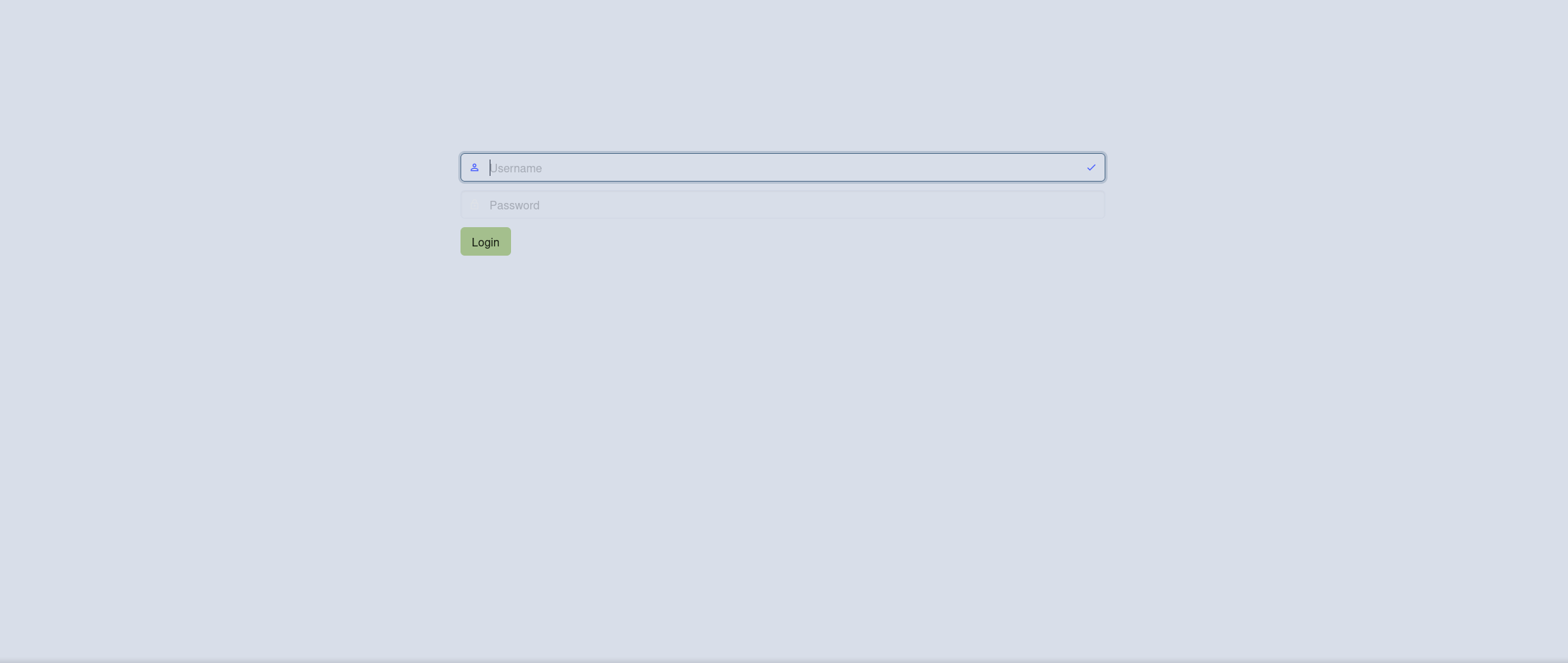
Dashboard
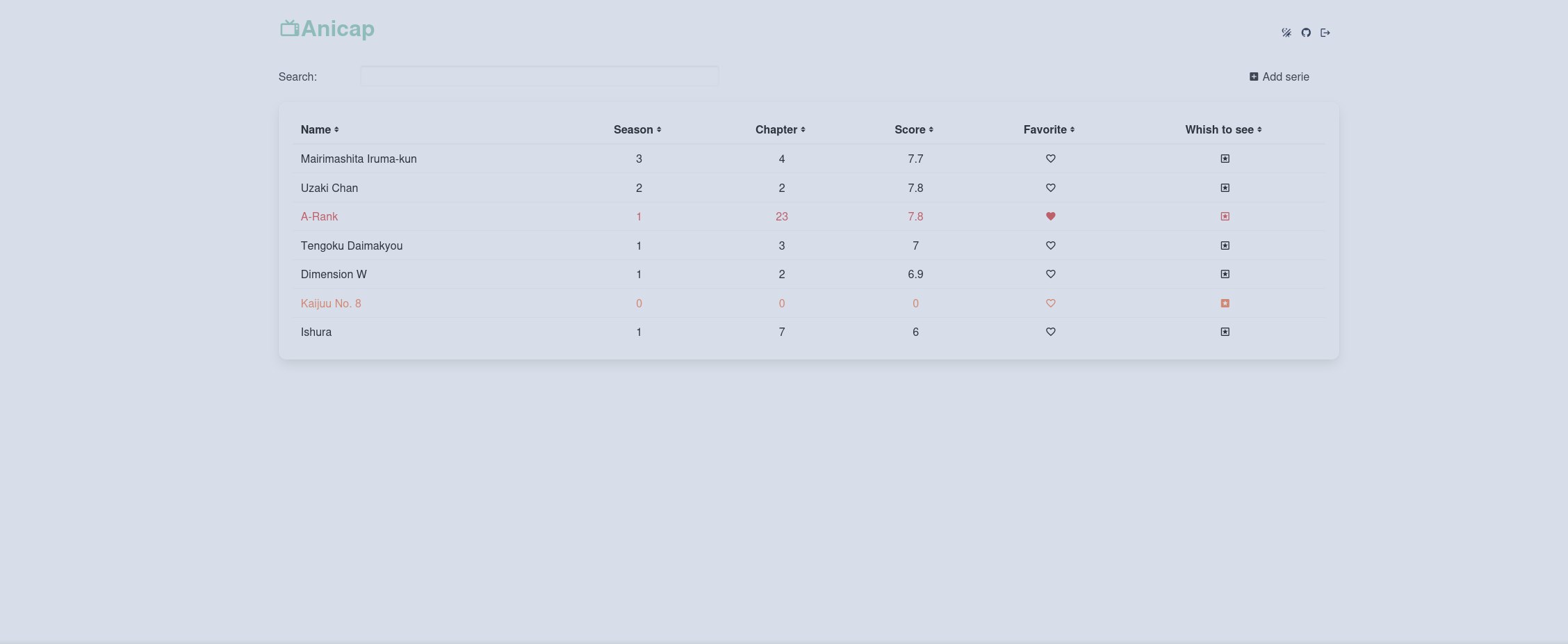
Dashboard Search
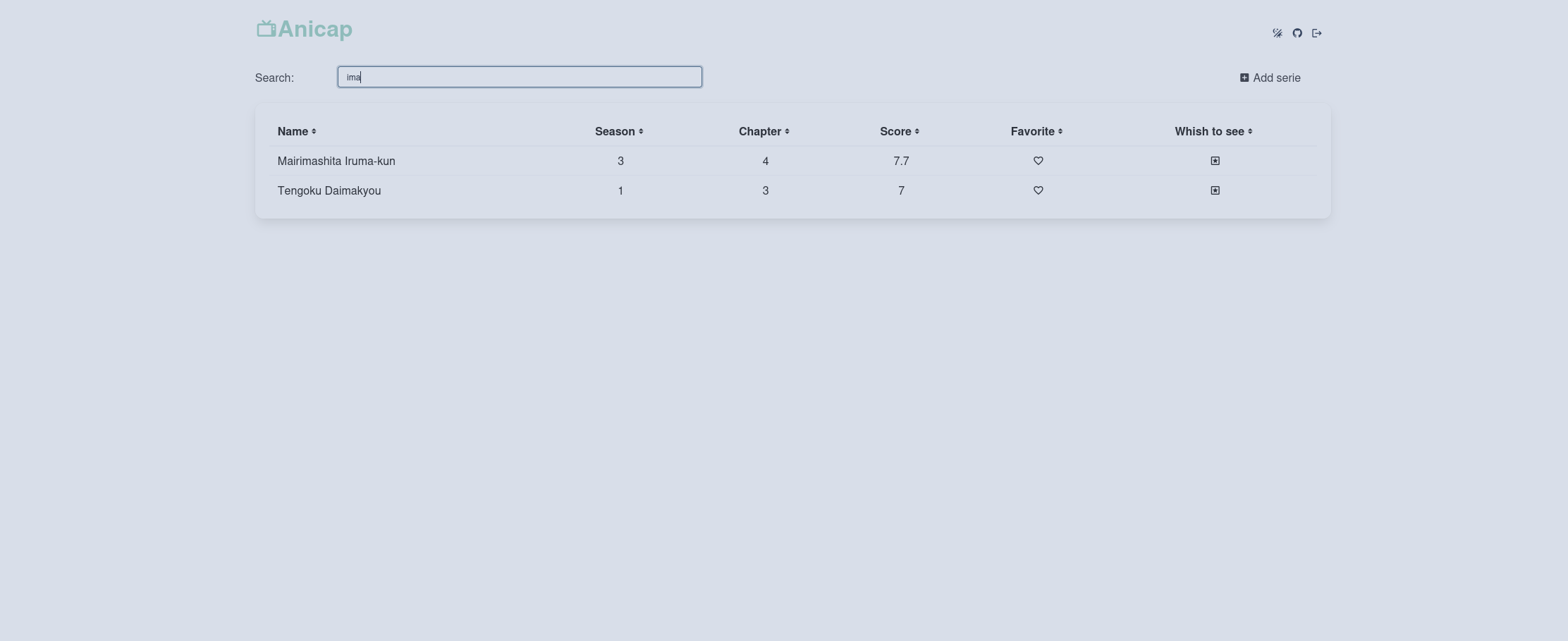
Serie Editor
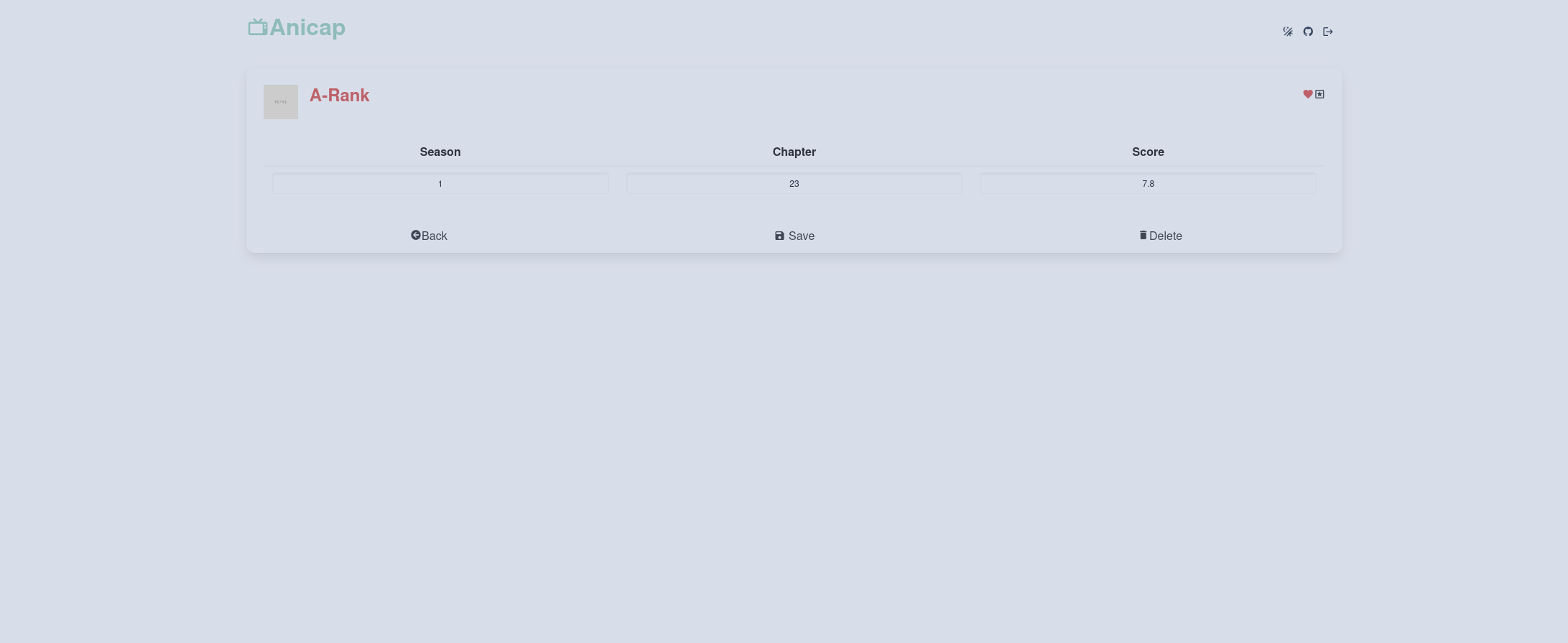
New Serie

Dark Theme
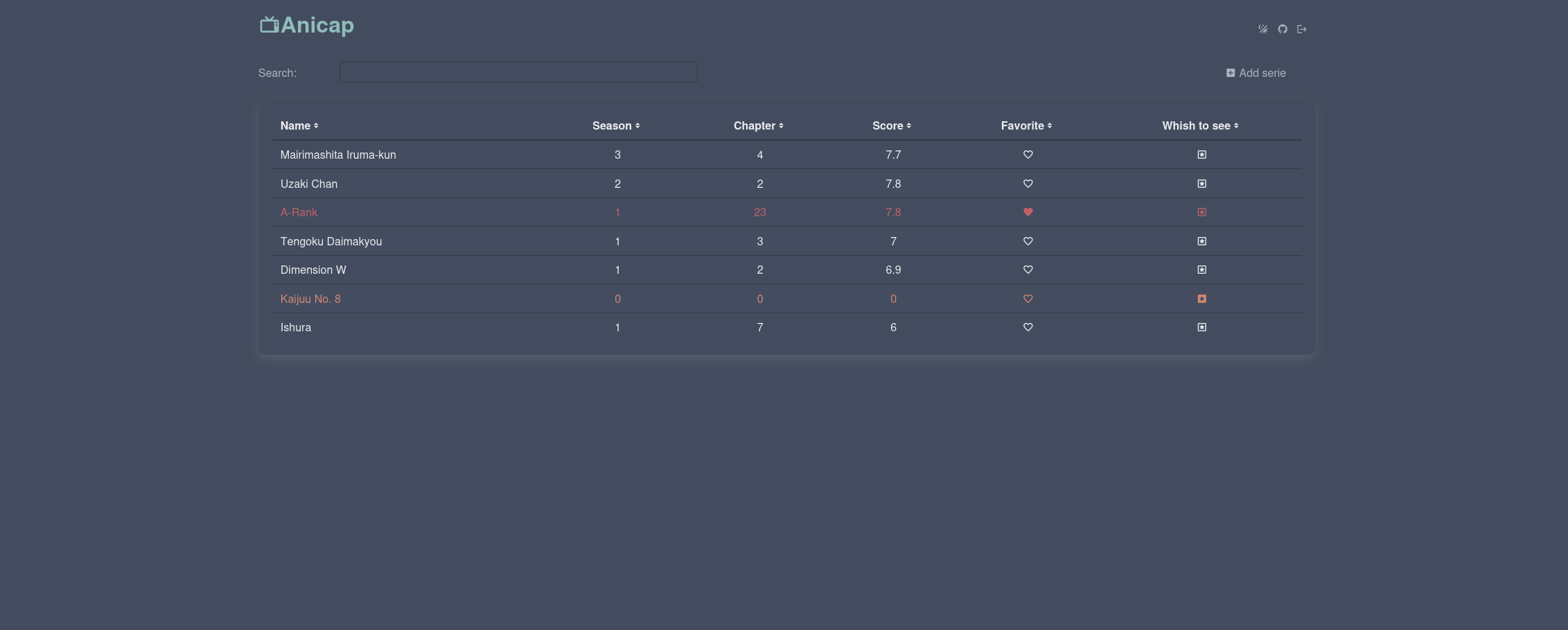
You can found the code for this project on Anicap
Conclusion
Working on frontend was a nice journey to me a little bit stressful, though. That's becuase some concepts are completely different than I thougt and also I didn't understood some of them until I was searching on the internet how to do A or B thing in VueJS. Concepts like KY hooks, reactivity or stores were not in my mind when I was starting with this Journey.
I'm still considering myself as a newbie on the frontend world, but so far, I like it.
My recomendation for those backend devs who wants to start in the frontend world and become fullstack devs is to Study about concepts of the frontend world before learning about A/B framework or how building using npm, pnpm, yarn, etc. And when you understand about how some things work a good start is to use AlpineJS rather than complex stuff like VueJS or React